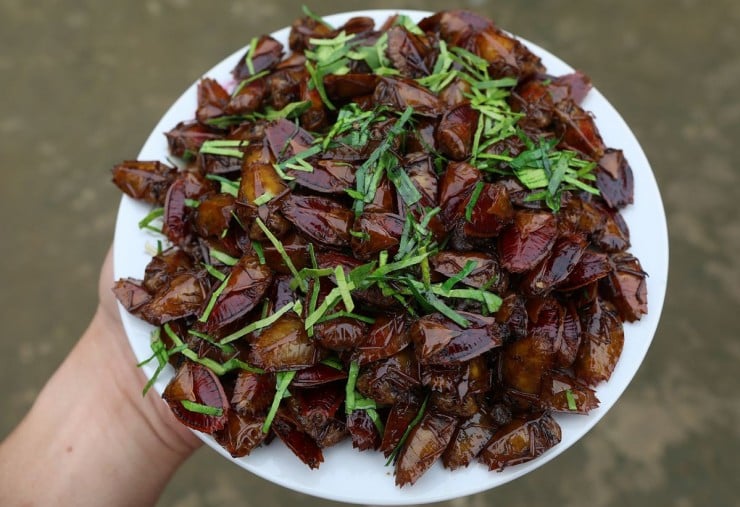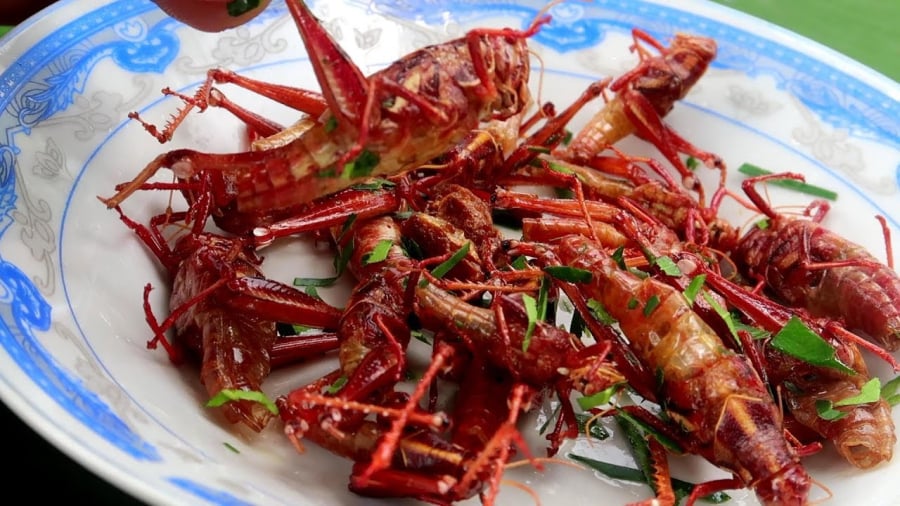Rock Worms: A Crispy, Memorable Delicacy
If you ever find yourself in the mountainous regions of Northwest Vietnam, especially in Lai Chau or Yen Bai, you might be offered a delicacy that has made many squirm—rock worms. Also known as water centipedes, these creatures dwell in the cold streams under rocks and have a long body with multiple legs and a pointed tail.
For the uninitiated, encountering a plate of fried rock worms can be a nerve-wracking experience. But don’t be too quick to refuse, as a single bite will surprise you with its crispy, buttery, and nutty flavors, reminiscent of a cross between bamboo worms and silkworm pupae. In the Muang So region, the locals skillfully stuff the worms with fish meat before frying them, creating an unforgettable, unique dish.
“Despite its unappealing appearance, the taste is exceptional. Rock worms are clean, nutritious, and have been a traditional delicacy of the Thai people for generations,” shared Mr. Lo Van Cuong, a Thai chef from Lai Chau.
However, those with sensitive constitutions should proceed with caution, as rock worms can cause allergies if not cleaned properly. Therefore, when trying this dish, it is advisable to choose a reputable eatery or seek guidance from locals on how to enjoy it safely.

Stink Bugs Transformed: From Pest to Prawn Crackers
Stink bugs have long been notorious for their pungent odor, wreaking havoc on lychee and mango orchards in Northern Vietnam. However, the Thai people of Northwest Vietnam have turned this pest into a renowned delicacy: stink bugs fried with lime leaves.
Stink bugs are typically caught during the summer when they swarm to feed on tree sap. After a thorough cleaning process, which includes removing the head, wings, legs, and intestines, the bugs are soaked in sour bamboo water for about 20 minutes—a crucial step to eliminate their distinctive odor. They are then deep-fried and stir-fried with lime leaves, resulting in a crispy, aromatic treat.
“At first, I was hesitant to try them because of the smell, but I ended up loving them! They have a crispy, buttery, and savory taste that’s hard to describe,” shared Nguyen Van Toan, a foodie adventurer.
For those adventurous eaters who embrace unique culinary experiences, stink bugs fried with lime leaves will be an unforgettable part of their journey through Northwest Vietnam.

Lang Son Forest Shrimp: The Elusive “Flying Shrimp”
When we think of shrimp, we usually envision plump, red seafood delights. But in Lang Son, they speak of “flying shrimp,” which are actually insects that resemble small gray shrimp with long legs, akin to grasshoppers.
Locals often catch these forest shrimp and prepare them by stir-frying them with sour leaves such as sumac, ginger, or lime. The shrimp have firm meat, especially in the thighs, and offer a satisfying “crunch” with each bite, akin to a combination of hill chicken and frog meat.
Not only is this a rustic delicacy, but forest shrimp are also considered a nutritious folk remedy. However, like other insects, they may cause allergies in sensitive individuals. Thus, it is advisable to start with a small portion and monitor your body’s reaction before indulging in larger quantities.

Dare to Try, and You’ll Be Hooked: Pushing the Boundaries of Culinary Adventure
The cuisine of Northwest Vietnam entices not only with its flavors but also with its challenging experiences. From rock worms to stink bugs and forest shrimp, each dish carries a story, a cultural nuance, and a sense of pride for the local communities.
What sets these dishes apart is not just their unusual appearance but also the intricate preparation methods that ensure hygiene, nutritional value, and a true taste of the region’s culinary heritage. For adventurous foodies, this is an opportunity to expand their culinary horizons and appreciate the boundless creativity of Vietnamese cuisine.

































